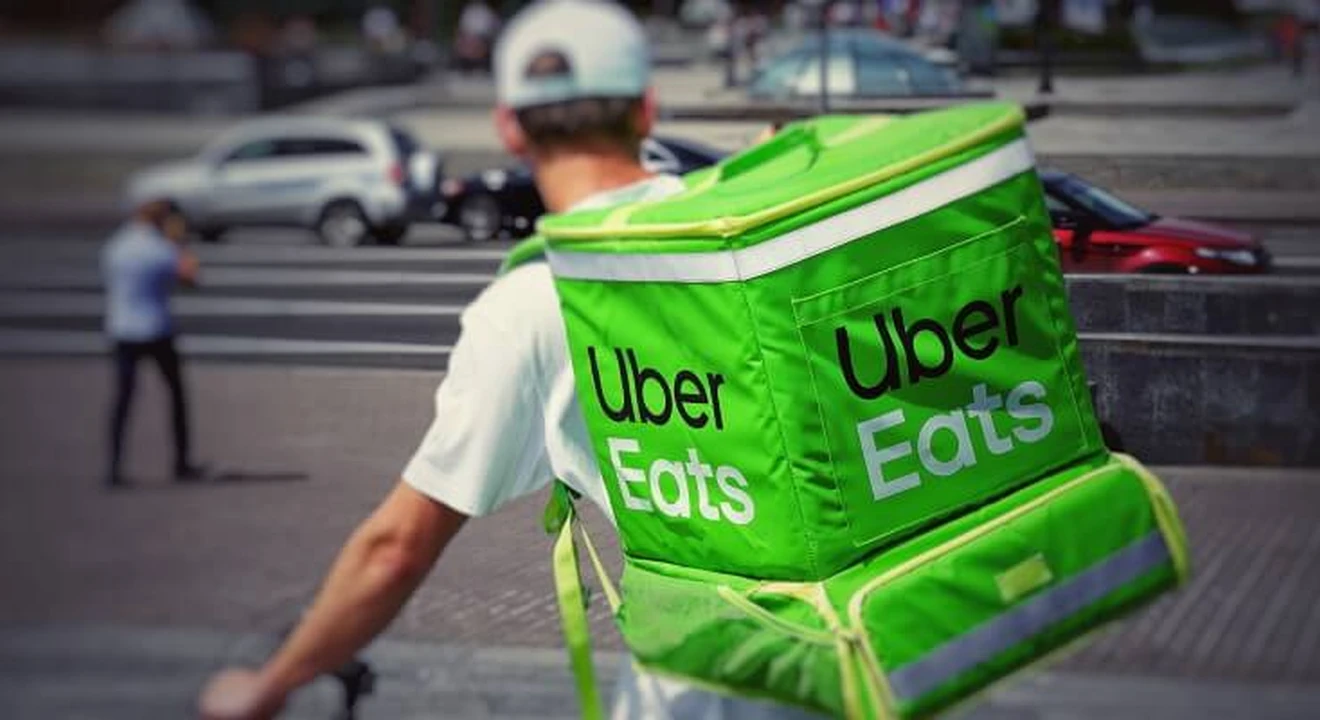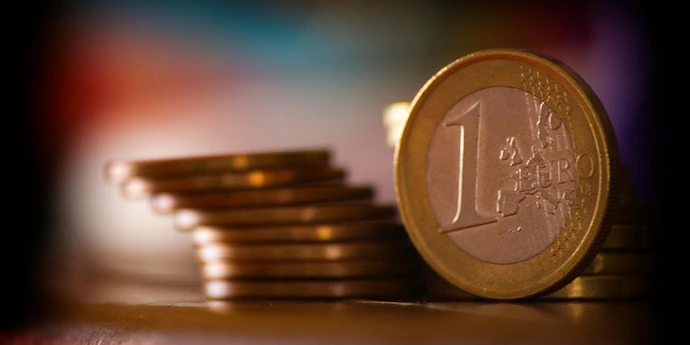Today, we’re going to cover everything you need to know to prepare for your Uber product manager interview.
The questions are challenging, they cover a wide variety of PM topics, and Uber also uses a unique assessment called a “jam session” that isn’t used by any other tech company.
We’ve gathered insights from ex-Uber PM interviewers on our platform, successful candidates we've worked with, hundreds of reports from Uber candidates on Glassdoor as well as information from official Uber sources, in order to put together this guide.
Below you’ll find a detailed overview of the Uber interview process, example questions, how to answer, and a preparation plan.
Here's an overview of what we'll cover:
Click here to practise 1-to-1 with Uber ex-interviewers
1. Uber Product Manager Role and Salary↑
Before we cover your PM interviews at Uber, let's take a quick look at the role itself (alternatively, feel free to skip straight to the sections on the interview process or interview questions).
1.1 What Does an Uber Product Manager Do?
Uber Product Managers’ responsibilities can vary depending on the specific product or team they are assigned to. But it generally includes product strategy, product roadmap, market analysis, cross-functional collaboration, innovation, and data-driven decision-making.
These are some areas you might find yourself working in as an Uber PM: Business Gift Cards, Growth Platform, Uber For Business, Marketplace Prediction, UberEats - Consumer Modalities, Driver Access, Finance, and Data.
Uber's diversified services, combined with the fact that the company operates in the "real-world" rather than just "online", makes the PM role at Uber unique among the top tech companies.
"The Uber PM role is the only PM role I know that emcompasses Real-world, Real-time, Global Scale and Diversified Services." - Simon Y, ex-Uber PM and interview coach
What skills are required to be an Uber product manager?
Uber is looking for technically savvy product managers who are good at working with data, have excellent attention to detail, and demonstrate a customer-centric focus. Excellent communication, leadership, and problem-solving skills are also expected.
1.2 Uber Product Manager Salary and Compensation
Uber PMs make 27% more than other PMs in the US on average according to Glassdoor.
Compensation mainly depends on two key factors: location and level.
Location: Salaries are adjusted for cost-of-living. For example, Uber PMs in the US make 3x more than their counterparts in India.
Level: Both base salary and total compensation go up with each PM level. The annual base salary of Uber’s L5 to L6 Product Managers is even higher than Google’s L5 to L6 PMs.
Here’s the average salary and compensation of the different product manager levels at Uber. This is based on the reported data from Levels.fyi.

If you’re unsure what level you’re being considered for, ask your recruiter.
Ultimately, how you do in your interviews will determine what level you’re offered. That’s why hiring one of our Uber PM interview coaches can provide such a significant return on investment.
And remember, compensation packages are always negotiable. So, if you do get an offer, don’t be afraid to ask for more. Check out our product manager salary negotiation guide for practical tips.
2. Uber Interview Process ↑
Similar to the timeline at Lyft, the full Uber interview process for the product manager role can take as long as 2-3 months from your initial application to receiving an offer. It could be a bit faster, or a bit slower, depending on the particular location and position for which you’re applying.
Here’s a quick overview of the steps you’ll face along the way.
Please note that the process is the same for Senior product manager candidates except they may face up to 5 onsite interviews.
- Resume, cover letter, and referrals
- A recruiter phone screen (30 min)
- Hiring manager screen (30 min)
- Onsite interviews
- A “jam session” (45 min)
- 3-4 “loop” interviews (45 min each)
If you haven't yet got an interview at Uber, you'll want to get your resume up to scratch.
You can use this free product manager resume guide to help tailor your resume to the position you’re targeting.
And if you’re looking for expert feedback, you can also get input from our team of ex-FAANG recruiters, who will cover what achievements to focus on (or ignore), how to fine-tune your bullet points, and more.
Get help and feedback on your PM resume from one of our coaches.
Note: If you are interviewing for a product leadership position (VP, Director, Group PM), learn more about the process and how to prepare here.
2.1 What to expect in the interviews
Now let’s cover the above steps in more detail.
First, recruiters will look at your resume and assess if your experience matches the open position. This is the most competitive step in the process, as millions of candidates do not make it past this stage.
Once you’ve been invited to interview with Uber, you’ll first speak with a recruiter for a 30-min phone screen. During this initial conversation, you should expect the recruiter to cover typical resume and behavioral questions. For example, they’ll likely ask you about your past experiences and about your motivations for applying for this role. If you pass this phone screen, then the recruiter will advance you to the next round of interviews.
Next, you’ll have a 30-45-min phone (or video conference) call with the Hiring Manager for the team you’re applying for, although in some cases it may be with another Uber PM. Again, here you'll mainly be asked behavioral questions. You'll need to give structured answers and be as data-centric as possible.
The final round is the onsite, which has two parts. First, you’ll encounter Uber’s famous “jam session”, which we’ll cover in more detail in the next section. If you do well in the jam session, you’ll be invited to the loop interviews.
The loop interviews are a series of three to four interviews. During the loop interviews, you’ll meet interviewers from a variety of roles within Uber. You’ll usually meet PMs, engineers, and data scientists. You MAY also meet people from UX and marketing. See the example questions section below to learn more about the types of questions to expect during your loop interviews. Although it's rare, Uber also occasionally uses case study interviews.
If all goes well, the onsite interviews are your last step as a candidate, and from there you just have to wait to (hopefully) receive your offer.
Don't worry, in the sections below we'll point you to all the resources you need to fully prepare for these interviews.
2.2 How Uber evaluates PM candidates
As you prepare for your Uber interviews, you may wonder how Uber evaluates their product manager and senior product manager candidates.
Uber has four key areas that they look for during the interviews. These areas, which we'll cover below, are the same criteria that Uber uses to evaluate internal promotions. As a result, there is a nice level of continuity between the interview process at Uber, and the way candidates are evaluated later within the company.
Now let's dig into the criteria that Uber is looking for in their applicants.
2.2.1 Product insight/vision
At a high-level, this refers to your customer obsession, strategic vision, and your ability to innovate.
Are you able to put yourself in the shoes of customers and think deeply about what they care about and how they can be served better? Are you able to look ahead and come up with creative solutions to solve problems?
2.2.2 Impact and execution
This area considers your bias for action, as well as your business impact, and the quality of your work.
Do you take ownership and move things forward? What tangible results have you delivered? Do you build good solutions? How do you use experimentation and processes to deliver better results?
2.2.3 Leadership and scope
This boils down to how effectively you lead and work with other people.
Are you a team player? Do you make your team better? Are you able to organize your colleagues to tackle complex challenges?
2.2.4 Technical depth
This area evaluates your knowledge in technical subjects like engineering, data analysis, and design.
How deep is your understanding of algorithms, data visualization tools, etc? Note that the particular technical topics that are considered would be those that are relevant to your role.
Hopefully, that gives you some extra insight into what Uber's interviewers are going to be looking for during your interviews. If you'd like to learn more about the way people within Uber think, then we'd encourage you to also read Uber's cultural norms. This is essentially Uber's internal list of values.
2.3 How offer decisions are made
Once you've completed all of your interviews, then the people at Uber will hold a "debrief" to discuss your application.
A "debrief" is a meeting where your recruiter and all of your onsite interviewers come together to decide if you'll be given an offer. More specifically, this meeting includes all of the people you met during your jam session and your loop interviews, in addition to your recruiter.
During the meeting, all of these people work together to make the decision collectively. And by the end, they will come to a "hire" or "no hire" decision. Sometimes, the candidate's level is also decided during this conversation.
Now that we've covered Uber's interview process, let's dig into more details on the jam session interview.
3. Uber’s Jam Session Interview ↑
The jam session is probably the most unique part of Uber’s PM interviews. If you've already been preparing for PM interviews at other companies, then those skills will help you during your loop interviews and your phone screens for Uber. But, for the jam session, you'll need to prepare a bit differently.
As we mentioned above, the jam session is typically the FIRST interview you'll face during your onsite visit. And what you'll encounter during the jam session is different, depending on your level.
Let's first cover how jam sessions operate for candidates who are under the Group Product Manager level, then we'll talk about jam sessions for applicants at (or above) GPM, and then we'll get a bit more tactical and discuss some tips for how to perform well during your jam session.
2.1 For candidates below Group Product Manager level
If you are applying for a position that is below Uber's Group Product Manager level, which is likely the case for most candidates, then your jam session will be a bit like a brainstorming session.
You'll typically be given the "prompt" for your jam session 24-48 hours in advance of your onsite visit. The "prompt" is essentially just the topic or problem that you're looking to solve.
Here's an example of a prompt that you might encounter for your jam session: How would you make UberEats more usable during the Covid-19 lockdown?
During your jam session, you'll be discussing ideas with 1-2 Uber PMs as well as a cross-functional person from Uber (e.g. a data scientist, software engineer, etc.). However, there will not be any other candidates included in your jam session, just you.
Okay, let's stop there for a moment and look at the jam session for candidates who are at or above the Group Product Manager level. If that doesn't apply to you, then skip down to section 3.3 below.
3.2 For candidates at or above Group Product Manager
If you're applying for a Group Product Manager role, or something even higher up the ladder, then the jam session will look a little different for you.
Instead of getting your prompt 24-48 hours in advance, you'll typically get it a week in advance. And this is good news because you will need to prepare a presentation that addresses the question/problem in your prompt.
The fact that you need to prepare and deliver a presentation is the primary difference between jam sessions for GPMs (and up) and other candidates. You can expect most other elements of the jam session to be the same.
3.3 How to ace the jam session
Now let's run through a few important principles that you'll want to keep in mind as you prepare for your jam session. All of the tips below are relevant to both the brainstorming and presentation-style jam sessions, the way they come into play may just look a little different. Let's dive in!
3.3.1 Be data-centric
Uber is a very data-driven company. This is evident in the company's operations, but it's also a part of Uber's culture.
The company likes to hire people who have a knack for understanding and using data to identify and solve problems. So, you should make it a priority to tie your analysis and ideas back to data during your jam session.
3.3.2 Consider a 2/3-sided market
Uber's products serve multiple sides of a single market. Just think of Uber's ridesharing app. They are serving drivers AND riders. Likewise, if you think about Uber Eats, Uber is serving customers, restaurants, and couriers.
So, when you're in a jam session, don't just focus on one side of the market (i.e. riders/customers). Instead, be intentional about analyzing how potential solutions will impact all relevant sides of a given market.
3.3.3 Demonstrate that you can move fast
Uber values speed and they want to hire candidates who can synthesize information and form actionable next steps, without getting too bogged down by the available (or unavailable) details.
During your jam session, there will likely be a lot of ideas and considerations brought up. You'll need to demonstrate that you can take those inputs and turn them into next steps by prioritizing what should be done first. There are several good ways to prioritize, but it can work particularly well to prioritize the actions that will have the biggest impact on a metric that's relevant to your topic.
3.3.4 Stick to your guns, in a nice way
Within Uber, "don't be a renter, be an owner" is a common saying. In other words, when people at Uber see a problem or have an idea, there is an expectation that they're going to do something about it!
In your jam session, one way you can demonstrate ownership is by sticking up for an idea that you think is good, even if one of your interviewers disagrees or questions the approach. Don't be rude or abrasive, but if you have an idea (or disagree with an idea), then say so and articulate your reasons.
If you can follow the above tips during your jam session, it will go a long way toward making a strong impression on your interviewers.
What does Uber look for in product managers?
Uber places a very high value on data-driven decision-making and therefore looks for product managers who are adept at using relevant metrics to analyze data and extract insights. Uber also wants product managers who can identify challenges, think innovatively, and propose creative solutions in a dynamic environment.
4. Uber Product Manager Interview Questions ↑
Below, we've compiled lists of real questions from Uber product manager interviews. To help you structure your preparation, we've organized them into four categories.

The above breakdown is based on an analysis of data from Uber PM and Senior PM interview reports on Glassdoor.com.
You can see that question types align closely with the "applicants criteria" we mentioned in Section 2.2.
- Behavioral (38%, most frequent)
- Product insight/sense (28%)
- Execution (22%)
- Technical (12%)
Now you've seen an overview, let's get into the first and most frequently asked question category: behavioral.
4.1 Behavioral Questions (38%)
You can expect behavioral questions throughout the Uber interview process, but particularly in the early rounds. Your interviewers will use them to assess you on whether you can demonstrate skills and values that match with Uber's.
Most people structure their answers to behavioral questions using the STAR framework. (Situation, Task, Action, Result) as its the most widely known method. However, candidates often struggle to distinguish between task and action, and overlook lessons learned in the results.
For a more effective approach, we recommend using the SPSIL (Situation, Problem, Solution, Impact, Lessons) method. You can start by providing concise context that will enable the interviewer to understand the problem and solution. Highlight your individual contribution during the solution phase, quantify the impact of your actions, and conclude with the lessons you’ve learned.
For a detailed look at how to use the SPSIL method, see our article on how to answer behavioral questions at tech companies. This guide primarily focuses on Meta but can be applied to any company.
- Tell me about yourself (watch example answers)
- Why do you want to work at Uber? (sample answer from Amazon interviews)
- How would you work with this particular department?
- What do you like about being a PM?
- Where do you see yourself in 5 years?
- Describe past projects where you managed many developers.
- What is your biggest weakness?
- What is your biggest achievement?
- Tell me about a time you had to deal with conflict (see example answers)
- How do you work with designers/engineers?
- Tell me about a time you worked as part of a team
- What experience do you have in monetizing B2C products/services?
If you need more practice, check out our guide on PM behavioral interview questions, which includes sample answers to the top 8 most commonly asked.
4.2 Product Insight/Sense (28%)
To assess your understanding of the product space, your user-centricity, and your ability to manage and improve a product, Uber asks a mix of product strategy and product design questions, with the former usually more frequent.
Product strategy and design questions can be challenging due to their ambiguity. You'll need to start by asking clarification questions to reduce the scope of the problem and try to identify the business objective. You'll then want to identify user segments and their problems, before starting to provide solutions and what success metrics might look like.
What we have just described is essentially the BUS (Business objective, User problems, Solutions) method. Learn more about how to use it in our separate guides on product strategy questions and product design questions.
- How would you deploy autonomous vehicles? What's your launch strategy
- Uber is going to expand into grocery; what needs to be done in the marketplace?
- Suppose Uber is about to launch Uber Grocery. Walk me through from 0-1 (MVP)te
- How would you increase the revenue per cart of Uber Eats?
- What would you have done differently in your last product launch?
- Develop a product roadmap for X.
- Should Uber rent cars to drivers who don't own cars?
- How would you go about starting a bike rental marketplace?
- Design a solution for driver dispatch
- Design a fridge for the blind
- Design X feature for X app
- Design an airport with respect to luggage pick up
- How would you improve Google Maps?
- How would you design a feature to allow users to order rides on someone else's behalf?
Exercise: Ask yourself this product strategy question: "Imagine you're CEO of Uber: what would be your 10-year plan?" Then watch a Google PM give their answer in the video below. This is great interview practice and you'll also get some strong strategic insights into Uber, its competitors, and its challenges.
4.3 Execution Questions (22%)
Uber is an extremely data-driven company and Uber PM job descriptions often say they're looking for the following: "Finger-tippiness with data. You find a way to get the data you need and whip it into an insightful story with no help. You know how to leverage this data to make decisions without getting stuck in analysis paralysis."
Expect questions that test your ability to work with metrics, analyze data, and perform A/B testing. Many candidates report being given a problem and asked to troubleshoot/debug it.
We recommend using the GAME (Goals, Actions, Metrics, Evaluations) Method when answering metric definition questions. Understand the product goals and identify user and business objectives. Then list user actions to focus on trackable metrics, and define precise metrics for each action. Finally, evaluate selected metrics by emphasizing trade-offs and limitations.
For metric change questions, you'll need to ask a lot of questions. First, to get more information about the problem and then to explore possible root causes.
For a more detailed look, see our specific guide: How to answer metric questions
You may also face an estimation question, or be required to perform some estimations as part of a wider answer.
When tackling estimation questions, start by asking clarification questions to ensure that you know exactly what to calculate. After that, outline your calculations, round the numbers, perform the calculations, and then conduct a sense-check of your results.
Click here to read up on how to answer estimation questions.
Note: Uber candidates report receiving this type of questions but we only have three specific examples (the first 3 on the list). So to help you practice, we've taken some execution questions from Meta PM interviews (known to be similar) and adapted them to Uber.
- How would you improve the consumer funnel conversion cycle?
- Can you tell me how would you estimate how many riders are potentially at one spot during peak traffic?
- How do you define objectives and key results? Is this a top-down or bottom-up approach?
- What metrics would you use to measure the success of Uber’s “Split Fares” feature?
- What analysis would you use to understand if we should increase the price of an Uber Eats delivery?
- There's been a 15% drop in usage of Uber Eats — how do you fix it?
- You are looking at Uber's ridesharing data and notice a 10% jump compared to yesterday in New Zealand — what happened?
- Users are no longer signing up for our email list — what would you do?
- Estimate Uber drivers needed in San Francisco Bay Area (watch mock interview answer)
4.4 Technical Questions (12%)
Even in non-technical PM roles, Uber job descriptions often list "Technical savviness" as a key attribute. And so you can expect to be asked at least one technical explanation question during the interview process.
Expect questions that will test your understanding of technical concepts and your ability to communicate complex ideas to non-technical stakeholders. The interviewer may also broaden the discussion to include the product's value proposition, features, target audience, and industry.
When discussing apps or products, you must also demonstrate knowledge of the technology's end-to-end process
If you'd like to learn more about answering this kind of question, then check out our separate guide on how to answer technical questions in product manager interviews.
- How familiar are you with open-source technologies?
- Tell me how Netflix works.
- Explain how UberPool’s pooling algorithm works to a five-year-old.
- Open the Uber app and talk me through the information architecture.
- Design a leadership dashboard showing the top 10 profitable cities for Uber across all business verticals.
5. Uber Interview Tips ↑
You might be a superb product manager, but unfortunately, that’s not necessarily enough to ace your interviews at Uber. Interviewing is a skill in itself, that you need to learn.
Let’s look at some key tips to make sure you approach your interviews in the right way.
5.1 Ask clarifying questions
Some of the questions you will be asked will be quite ambiguous. In those cases, you’ll need to ask clarifying questions to get more information about the problem and to reduce its scope.
Jumping straight in without asking questions first will be a red flag to the interviewer and will hinder your answer.
For instance, if you were asked, “What would be your 10-year strategy if you were CEO?” you can respond by asking some questions about the company’s current situation and any business objectives the interviewer may have in mind. This way, you’ll have a better understanding of what the company needs in the coming years and have more information from which to build a strategy.
5.2 Justify your choices
The interviewer wants to understand your reasoning throughout your answer, so make sure to justify each decision you make. You'll need to make plenty of trade-offs as you arrive at a solution, so be sure to call them out.
Uber emphasizes that both the journey (how you arrive at an answer) and the destination (your solution to the problem) matter.
5.3 Be data-driven
Uber is looking for product managers who can make decisions based on data and can judge everything they do by relevant metrics.
In an interview situation, it's okay to make assumptions because you might not have access to the facts and data. But you need to make it clear that in real life, you would seek out that data and that your approach would be highly data-driven.
5.4 Demonstrate user empathy
When answering a PM interview question, your first instinct should be to focus on the user. Identify who uses the product, why, and what the use cases are. Avoid designing a product based solely on personal preferences.
Of course, Uber products are marketplaces and so there are always more than one type of user - e.g riders and drivers. Be sure to take both into account.
5.5 Check-in with your interviewer
Interviewers differ in their willingness to provide hints. Some may wait for you to ask about customer or product details, while others expect you to make assumptions on your own.
Gauge this by asking a direct question or specifying your assumptions. If the interviewer tends to offer specifics, they’ll engage. If not, limit additional questions to demonstrate your ability to make decisions independently.
5.6 Answer methodically by using a framework
Using an answer framework will help you give a more clear, structured answer.
We recommend the BUS (Business objective - User problems - Solutions) framework for answering product insight questions and the SPSIL (Situation - Problem - Solution - Impact - Lessons) framework for behavioral questions.
5.7 Don’t get stuck in a framework
As we just said above, frameworks are extremely helpful. However, some of our successful candidates have mentioned that excessive reliance on frameworks may hinder your performance.
During the interview, trust your instinct, and don’t be afraid to deviate from the framework if needed. A framework is there to help you craft a better answer, not make you twist your answer to fit the framework.
5.8 Center on the company’s core values
Study Uber’s values, core principles, and mission statement. When answering behavioral questions, share stories from past experiences that align with Uber’s core values. When designing a product or a strategy, consider how your answer aligns with these values.
5.9 Treat the interview like a conversation
Keep in mind that the interview is a two-way discovery process. While the interviewer assesses if you’re a good fit for Uber, you’re also evaluating if the company aligns with your aspirations and preferences.
5.10 Save questions for your interviewer
You’ll have a few minutes to ask your interviewer questions as the interview wraps up. Arriving without questions may suggest a lack of interest in the company or the role.
6. Preparation Plan ↑
Now that you know what to aim for in your interviews, let's focus on preparation.
Below, you’ll find links to free resources and four introductory steps to help you prepare for your Uber PM interviews.
6.1 Deep dive into the product/organization
As you've probably figured out from some of the example questions listed above, you can't become a PM at Uber without being familiar with the company's products and its organization. As a result, you'll need to do some homework before your interviews.
Here are some resources to help you get started with this:
- Uber annual reports (by Uber)
- Uber strategy teardown (by CB Insights)
- Uber’s values (by Uber)
6.2 Learn a consistent method for answering PM interview questions
As mentioned previously, Uber will ask you questions that fall into certain categories like behavioral, design, strategy, estimation, and metric questions. Approaching each question with a predefined method will enable you to build strong interview habits.
Then, when it comes time for your interviews, these habits will reduce your stress and help you to make a great impression.
If you’re just looking for a jumping-off point, you can start learning about the different question types you’ll need to master in the following blog articles:
- Behavioral questions
- PM behavioral questions
- Product design questions
- Product improvement questions
- Strategy questions
- Metric questions
- Technical questions
- Estimation questions
- Prioritization questions
Once you’re in command of the subject matter, you’ll want to practice answering questions. But by yourself, you can’t simulate thinking on your feet or the pressure of performing in front of a stranger. Plus, there are no unexpected follow-up questions and no feedback.
That’s why many candidates try to practice with friends or peers.
6.3 Practice with peers
If you have friends or peers who can do mock interviews with you, that's an option worth trying. It’s free, but be warned, you may come up against the following problems:
- It’s hard to know if the feedback you get is accurate
- They’re unlikely to have insider knowledge of interviews at your target company
- On peer platforms, people often waste your time by not showing up
For those reasons, many candidates skip peer mock interviews and go straight to mock interviews with an expert.
6.4 Practice with experienced PM interviewers
In our experience, practicing real interviews with experts who can give you company-specific feedback makes a huge difference.
Find an Uber product manager interview coach so you can:
- Test yourself under real interview conditions
- Get accurate feedback from a real expert
- Build your confidence
- Get company-specific insights
- Learn how to tell the right stories, better.
- Save time by focusing your preparation
Landing a job at a big tech company often results in a $50,000 per year or more increase in total compensation. In our experience, three or four coaching sessions worth ~$500 make a significant difference in your ability to land the job. That’s an ROI of 100x!















